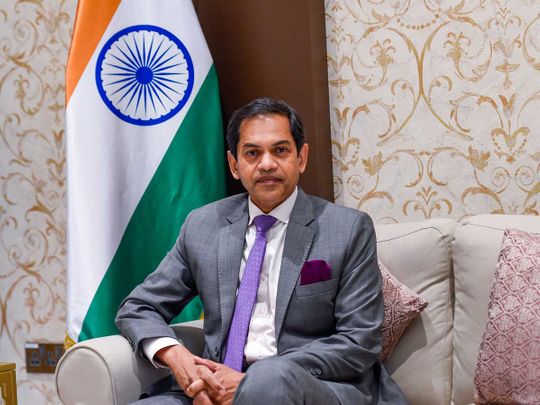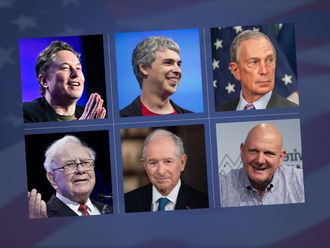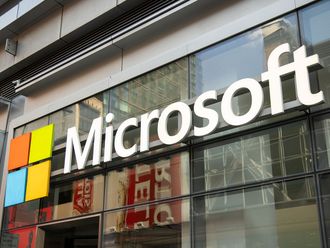
Dubai: India and the UAE aim to simplify customs procedures further to get maximum benefits from the CEPA deal, now entering its second year.
A ‘green corridor’ system, for instance, will see exports from India handled digitally in Abu Dhabi and Dubai ‘before they are ready for some other part of the world’, according to India’s Ambassador to the UAE, Sunjay Sudhir.
“Moreover, CEPA has a mechanism to address operational issues, and we are to constitute a joint committee to address implementation issues. And this committee should be meeting within a month to see how we can better use CEPA on both sides,” said Sudhir.
Read more
- Under CEPA, India opens up gold imports from UAE to bullion traders too in a win for all
- CEPA deal sets UAE-India for greater global cooperation, says Dr. Thani
- Under UAE CEPA deal, India should consider cutting gold import duty by another 1%: Malabar’s Chairman
- After CEPA gains, UAE-India move closer to cutting a deal on dirham-rupee trade
Regarding the potential rupee-dirham trade deal, the official said negotiations are ongoing between the UAE Central Bank and the Reserve Bank of India. “It’s essential for countries to de-risk trade payments, particularly when there are their major trade partners like India and the UAE,” he said. (India has already agreed to settle trade deals in rupees with Malaysia and Sri Lanka.)
Energy flows
The UAE pledged a $75 billion investment in India for clean energy projects, and the two are collaborating on manufacturing solar power equipment. They also signed an MoU for green hydrogen development and an undersea cable connecting India to the UAE. There is also talk of interconnecting their electricity grids.
“We have finalised an MoU, but all I can share at this stage is that it is awaiting cabinet approval in India,” said Sudhir. “As soon as the cabinet gives approval, and the MoU is signed, we should be able to take more concrete steps in exporting renewable power.”
The planned proposal falls under Prime Minister Narendra Modi’s ‘One Sun, One World, One Grid’ initiative.
If the proposed power grid materialises, it will help both nations share renewable energy to enhance production of low-carbon fuels such as hydrogen and ammonia in each other’s country. “It will help both our countries meet targets we have set for ourselves to reduce our carbon footprint,” the Ambassador added.
The Department of Education and Knowledge Abu Dhabi (ADEK) and IIT Delhi are in discussions regarding the location of the IIT campus and areas in which degrees would be awarded. Discussions surrounding accreditation of the institute are also taking place.
Trade numbers
In the 11 months from April 2022, bilateral trade has hit about $77.6 billion from $65.1 billion.
The growth is evident in sectors such as gems and jewellery, manufactured goods, textiles, and agricultural products.
Non-oil trade has risen to nearly $50 billion since CEPA, putting it on track to achieve its $100 billion goal by 2030. Indian imports from the UAE have grown by over 21 per cent in the past year. “We are seeing an increase in demand for plastics, iron and steel and chemicals from the UAE into India,” said Sudhir.
“We have had investments from Emaar, Lulu Group and DP World into Jammu and Kashmir, for instance. Another example I can give is when Uttar Pradesh hosted the global investor meeting in February, two Ministers of State and a business delegation from the UAE participated. Investor confidence has been promoted by CEPA.
“Big ticket investments, such as the International Holding Company’s (IHC) $400 million investment in Adani Enterprises and Mubadala’s in Reliance (Dh31 billion) and Tata’s electric vehicle business have created a robust economic ecosystem.”











